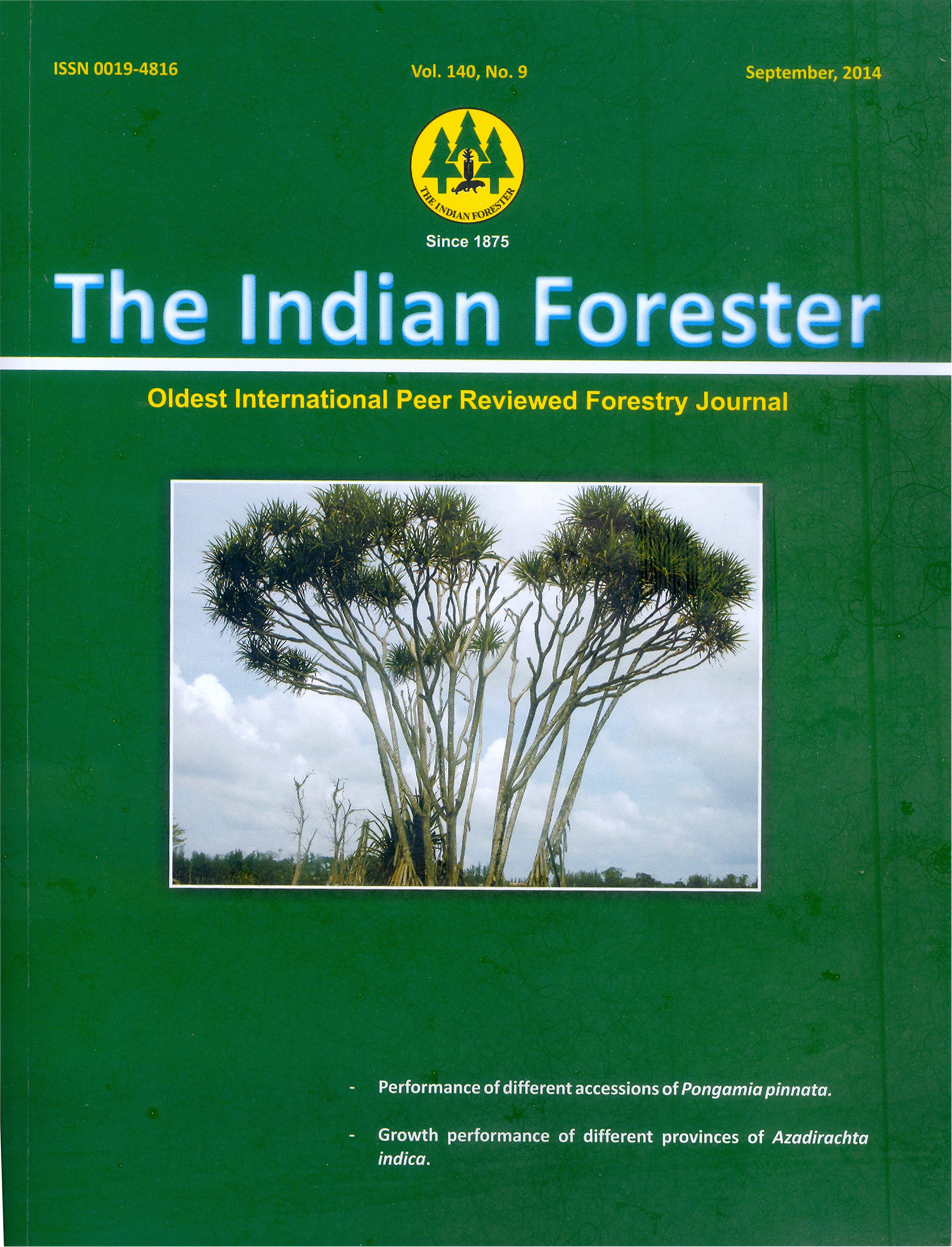A Note on Albinism In Melia Dubia Cav.
DOI:
https://doi.org/10.36808/if/2014/v140i9/52369Keywords:
No KeywordsAbstract
No Abstract GivenReferences
Dhiman R.C. and Sharma (1997). Occurrence of albino and other chlorophyll deficient seedlings in Dendracalamus giganteus munro Indian Forester, 123(5):435-437.
Duria M.V. (2012) occurrence of Albino seedlings in Swietenia mohaghoni (L.) JACK. Indian Forester, 138(5): 486-487
Gunag R.P., Kiran kumar A.K. and Vasudeva R. (2006) Albino seedlings in Sapindus trifoliatus. Linn. J. Non-Timber-Forest-Products, 13(1); 63- 65.
Karoshi V.R., Hegde G.V., HIremath S.M. and Kanthraju (1999) Tips to raise Malabar neem. The hindu news paper Agriculture, Science and technology column.
Karoshi V.R., G.V.Hegde and S.M.Hiremath (2001) Albino seedlings in Gmelina arborea Roxb. Indian Forester, 127(4); 477-479
Kumar A., Sharma V.K. and Baniwal B.S. (1993). Albino seedlings in Dendrocalamus strictus Nees. Indian Forester, 119(6); 507-509.
Squillace A.E .and kraus J.C. (1963).The degree of natural selfing in Slash pine as estimated from albino frequencies. Silvae genitica, 30.; 163
Vakshaya R.K.(1981) Mutant albino in red sanders. Silvae genetic, 30: 163
Venkatesh C.S. and Emmanuel C.J.S.K. (1976) spontaneous chlorophyll mutation in Bombax ceiba, Silvae gentica, 25; 139
Venkatesh C.S., Sharma V.K. (1974) some useful seedlings of eucalyptus. Their genetic significance and value on breeding Silvae genetic, 23: 120-124
Downloads
Downloads
Published
How to Cite
Issue
Section
License
Unless otherwise stated, copyright or similar rights in all materials presented on the site, including graphical images, are owned by Indian Forester.





